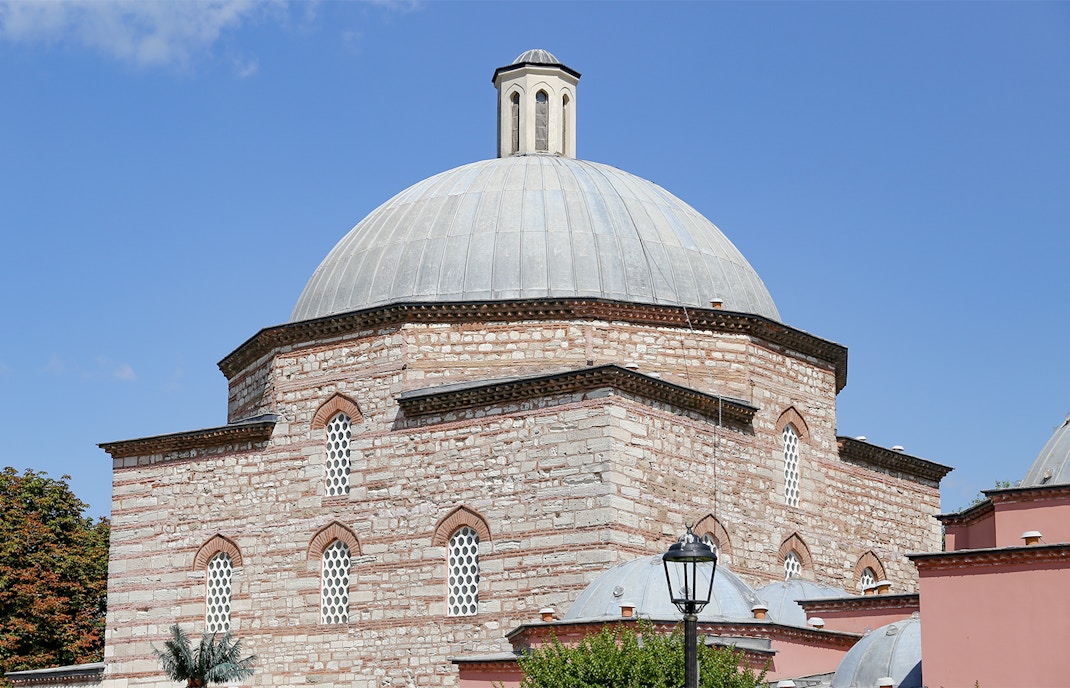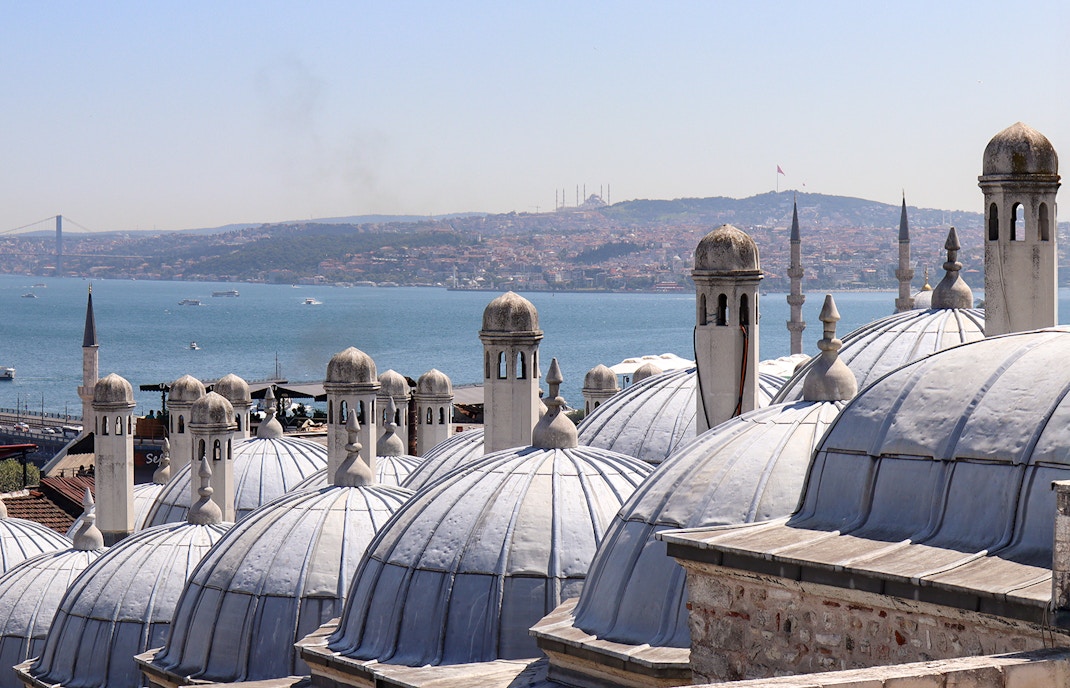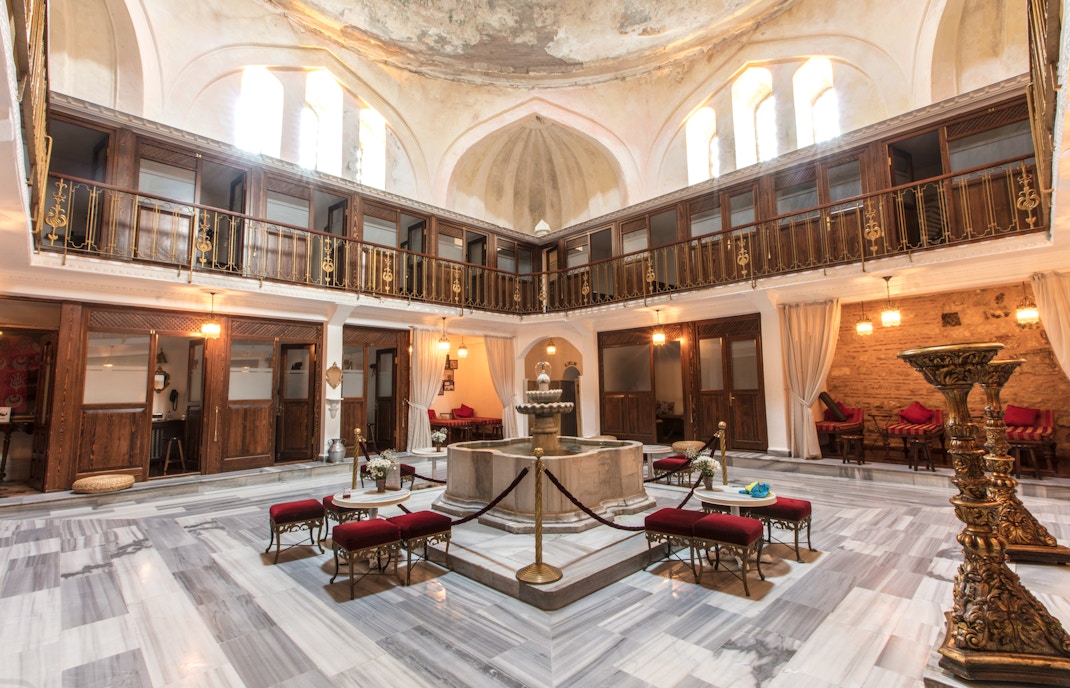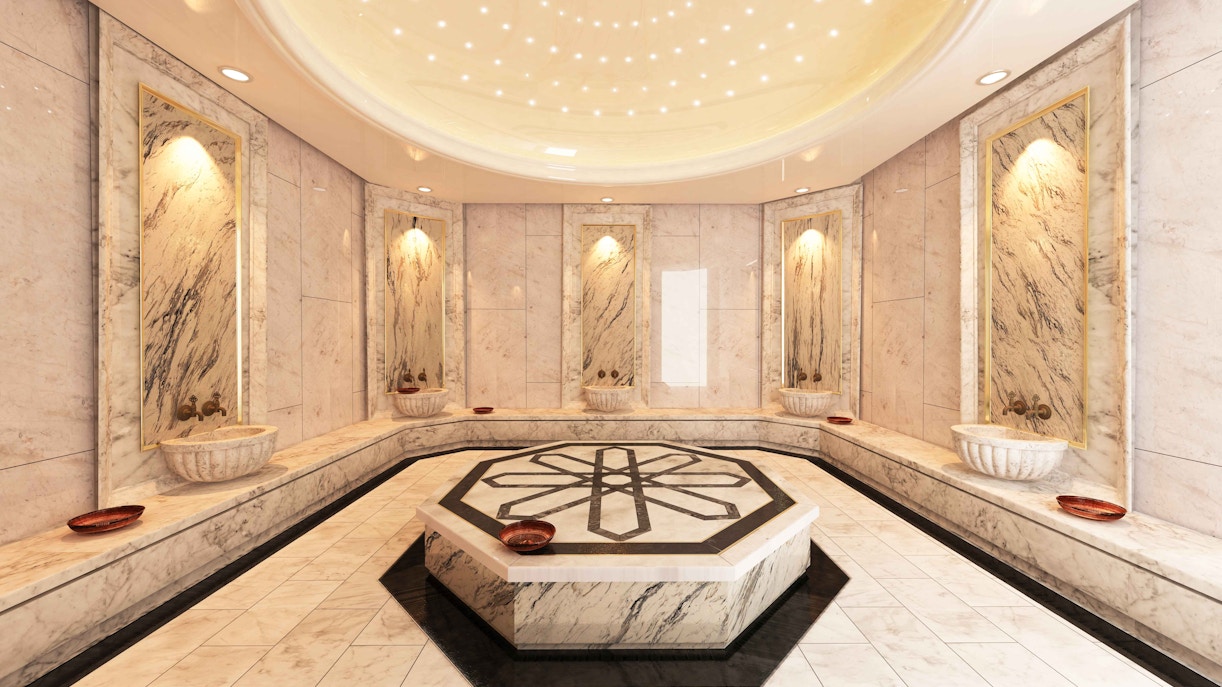
- Gedikpasa Hammam
- Acemoglu Hammam
- Cemberlitas Hammam
- Hurrem Sultan Hammam
- Taksim Hammam
- Cagaloglu Hammam
- History
- Architecture
- Pictures
History of Turkish baths | An overview of Istanbul’s hammam culture through the eras
History of Turkish baths in Istanbul

Roman origins
1st–5th century AD
The roots of Turkish hammams lie in ancient Roman public baths (thermae), which set the groundwork for communal bathing. These early bathhouses combined steam, exfoliation, and relaxation, and were central to Roman culture. Many of their features—like heated floors and steam rooms—continued down the ages and could be found in the Turkish baths that arrived later.

Byzantine refinement
6th century AD
Byzantine bathhouses were refined versions of their Roman predecessors, with larger structures and elaborate architectural designs. They were often decorated with mosaics, paintings, marble, and statues of gods and historical figures. The Baths of Zeuxippus in Constantinople were one the most prominent public bathhouses that directly inspired the later Turkish bath tradition.

Central Asian influence
13th century
Byzantine rule in Anatolia gave way to the Seljuk Turks from Central Asia, who were pivotal in the spread of hammams in the region. They brought with them bathing practices from Central Asia and Iran, which they combined with Byzantine and Roman traditions, as well as Islamic rules. Seljuk public baths were places of both hygiene and social interaction.

Ottoman pinnacle
15–16th centuries
Istanbul’s first Ottoman hammams were built in 1454, the year after Sultan Mehmed II conquered Constantinople. Many Byzantine baths were also renovated in the Ottoman style. During Suleiman the Magnificent’s reign, architects like Mimar Sinan built grand Turkish baths, with elaborate domes and luxurious marble interiors inspired by the Hagia Sophia. They remained social and cultural hubs throughout the Ottoman era.

Decline in daily use
19th century
As Western-style private bathrooms and modern plumbing became more common, Istanbul’s Turkish baths saw a gradual decline in daily usage, especially among the nobility and the wealthier citizens. However, hammams remained popular among the general public and tourists. Newer bathhouses incorporated European architectural elements and features while maintaining traditional bathing practices.

Modern resurgence
1980s to today
By the late 20th century, many of Istanbul’s historic hammams had fallen into disrepair. However, with the rise of tourism, many of them were meticulously restored to their former glory. Traditional bathing rituals were recognized for their ancient wellness benefits, and tourists began flocking to the hammams for a slice of history, health, and culture.
The Golden Age – Turkish Baths during the Ottoman Era

Ancient wellness and religious significance
Turkish baths embodied wellness and spirituality. Ottoman bathing rituals—steam, massages, and exfoliation—boosted circulation, eased muscles, reduced stress, and revitalized the skin, offering a holistic rejuvenation for body, mind, and spirit. Rooted in Islamic traditions, hammams emphasized purification of body and soul, with ritual cleansing before prayers. Many were built near iconic mosques like Hagia Sophia, blending wellness with spiritual significance.

A social sphere for women
During the Ottoman era, Turkish baths were typically divided into gender-specific sections or had separate hours for women. This separation allowed women to bathe, relax, and socialize freely without worrying about privacy. Hammams became a vital social space in their daily lives, where they could gather, exchange news, and form close bonds, fostering community and solidarity.

Communal and cultural spaces
Turkish baths were vibrant social spaces integral to Ottoman culture. Everyday bathing rituals were accompanied by conversation, games, and the exchange of gossip. But beyond, important discussions, such as business deals, political matters, and even marriage negotiations, often took place in the hammam’s serene atmosphere. They were popular venues to celebrate births, engagements, and for pre-wedding rituals.
Architecture of Turkish hammams in Istanbul

Turkish bath architecture evolved from Roman thermae and Byzantine baths, blending classical design with Ottoman innovation. Key features included large domes for ventilation, marble interiors, and intricate tilework. During the Ottoman era (1453-1750), architects like Mimar Sinan refined the hammam design, adding grandeur with expansive central rooms, geometric layouts, and atmospheric lighting. These elements created a harmonious space for both relaxation and social interaction.
Architecture of Turkish baths
Book your Turkish baths tickets
Frequently asked questions about the history of Turkish Baths
Public bathhouses in the region of Turkey date back over 1,000 years, originating in Roman and Byzantine bathing traditions. Most of the Turkish baths or hammams we see in Istanbul today were built during the 15th to mid-18th centuries during Ottoman rule.
Ottoman Sultan Mehmed II commissioned the first hammams after conquering Constantinople in 1453. Architect Mimar Sinan designed many of Istanbul’s iconic Turkish baths during Suleiman I’s reign. Hurrem Sultan, Suleiman I’s queen, was instrumental in the construction of the Hurrem Sultan hammam in the 16th century.
With the Ottoman Empire’s influence spreading westwards, hammams were established in many European countries in the 18th and 19th centuries. Victorian Turkish baths became popular in the UK, while Budapest’s hammam-style baths, like the Rudas baths, are still operational today.


